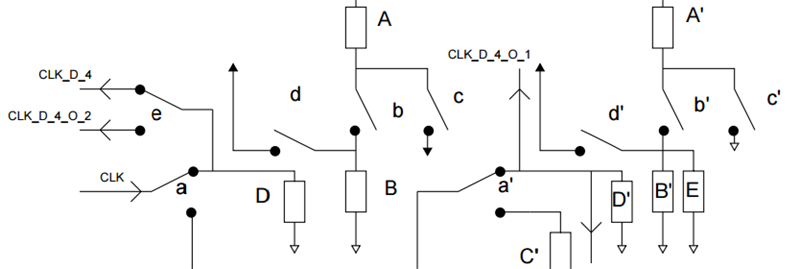The story for permanent storage for computers begins with the Jacquard loom. Hackaday commenters that are less clever than a Wikipedia article may argue that it was the earlier Bouchon and de Vaucanson looms, but either way we owe permanent storage methods to loom designers. So the story goes that punched cards for weaving brocades and damask patterns in cloth turned into punched cards for tabulating a census, calculating artillery trajectories, and ends with hundreds of gigabytes of storage in a thumbnail-sized micro SD card.
This story glosses over one important fact. The automated looms of the 17th century were simply a way to make a manufacturing process faster. These automated looms were the forebears of numerically controlled machine tools. These machines, first a lathe, followed by mills and all sorts of metalworking tools, first appearing in the 1950s, used punched tape to store the commands required to mill a part out of metal. Just like the SD card on a modern 3D printer.
For [will.stevens’] Hackaday Prize entry, he’s going back to the roots of automated manufacturing and building a punched card reader for his 3D printer. Is the idea sound? Yes. Is it going to be easy? No, [will] is creating his punched card reader on his 3D printer. It’s the ultimate expression of the RepRap philosophy of self-replication, and an interesting engineering challenge, too.
[will]’s idea for a punch card print controller uses relays. It’s a simple control system that encodes the individual steps for the X and Y axes, along with a length of a line. This printer won’t be able to create lines that go in every direction, instead, there are only 48 possible angles this printer can use out of 360 degrees. At large scales, prints and plots will have the jaggies, but at smaller scales, this control system will be able to print something resembling a circle.
[will] has a PDF of his proposed control system, and he’s already hard at work creating the 3D printed relays and solenoids. [will]’s goal for this year’s Hackaday Prize is to create a 2D plotter – just one axis short of a 3D printer, and he’s well on his way to printing off his own punched cards.




















The insanity is strong with this one!
Man, Hackaday editors can’t get anything right. The first automated loom was built by Basile Bouchon in the early 1720s. See: https://en.wikipedia.org/wiki/Basile_Bouchon
All RepRaps are numerically controlled.
I think they are differentiating between NC and CNC here because while it does have numeric control, it is lacking the digital signal input to be considered CNC.
Any complex 2D curve can be approximated with a series of ellipse quadrants, these quadrant can be mechanically encoded on two conical equivalents of a series of tone wheels. i.e. it forms a lookup table where the value passed to the function is encoded in the rotation of the shafts. Jaggies begone!
I hope that helps. :-)
A Hammond tonewheel organ repurposed into a 3D printer controller?
Well if you just have a disk rather than a cone you need to mechanically control the magnification on each axis using an additional mechanism. There is more than one way to do it, research mid 20th century electromechanical computers such as the Rangekeeper, you should find some inspiration there if not a component that does exactly what is required for any given function.
And no not a wheel out of an organ, but that is the general idea, embody the maths in the geometry of the mechanisms.
I always thought the Hammond has such smooth curves on Latin jazz.
Automatic musical instruments go back much further. I am waiting for the player organ from Roman times to be dug up. The Antikythera computer is far more complex.
“A NUMERICALLY CONTROLLED REPRAP” This already exists (AKA every g’damn reprap). The title could be WAY cooler for such an insane, silly and excellent project.
The steppers could be replaced by the bi-directional counter/stepper mechanisms I used in this (http://www.chrisfenton.com/the-turbo-entabulator/), and then you’d get a fully mechanically driven reprap! You would also need a *lot* of punch cards =)
I think there’s an hipster “authentic” joke waiting in this one, but I’m not going to go looking for it.
Those of use who had to use punched cards/tape for anything, much less audio cassette/reel-to-reel digital tape, mag cards or any of the dozens of other data storage methods are sitting back with a skeptical amusement at the huge stack of cards necessary to make yet another keychain fob – more power to them for such a mad project.
If put to a vote, personally I’d love to see the Bletchley Bombe (or something with as many whirling switches) connected to a 3D printer if only for the kinetic art value.
https://youtu.be/Dr1U7Bva6Sw?t=1m1s
Next step is to get the 3D printer to print the punched cards to program the 3D printer, so that the 3D printer can print its own punched cards to program the 3D printer to print its own punched cards… buffer overflow line 1024.
I’m lost! Help, everything looks exactly the same!
Aaaaahhhhhhhhhh!!!